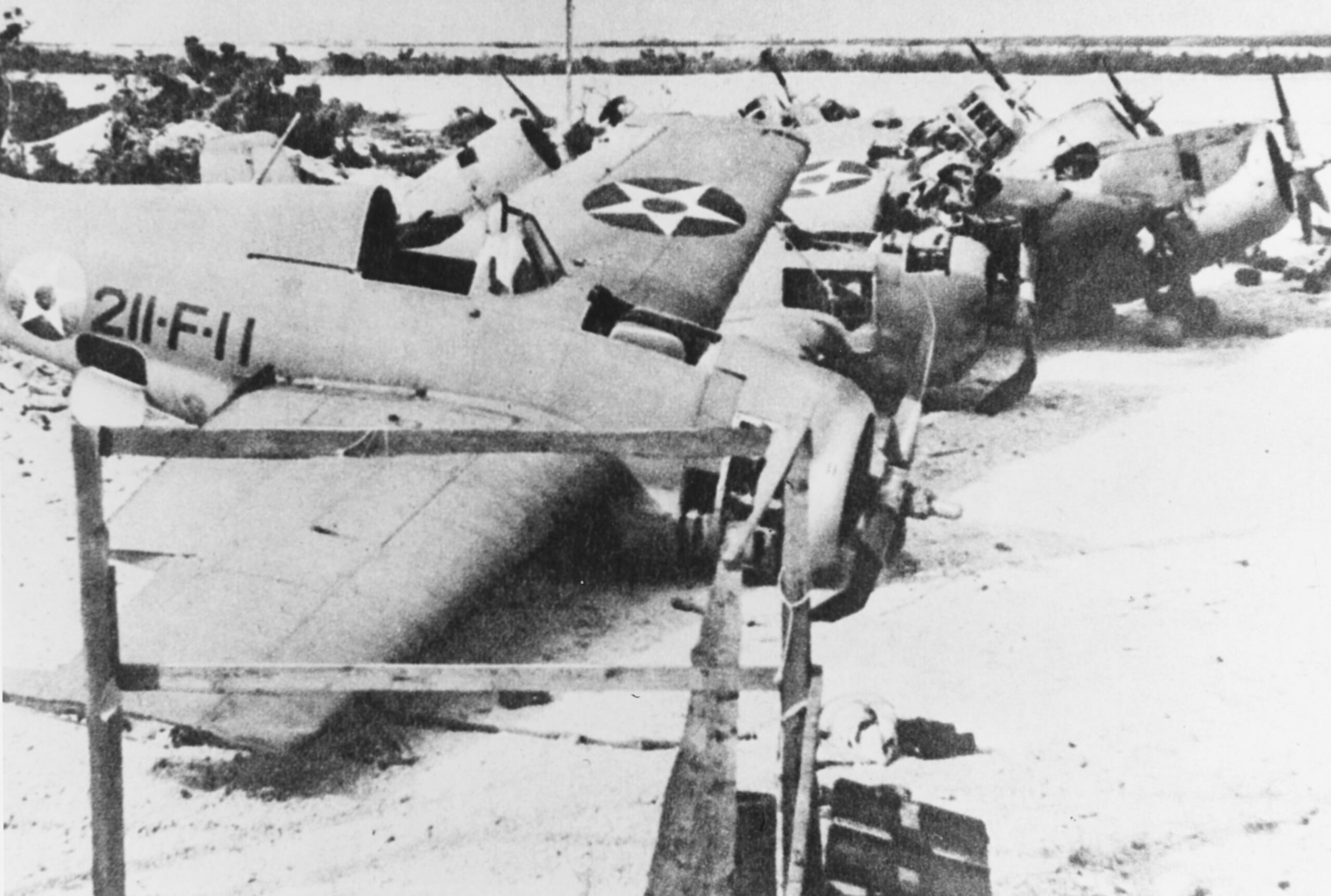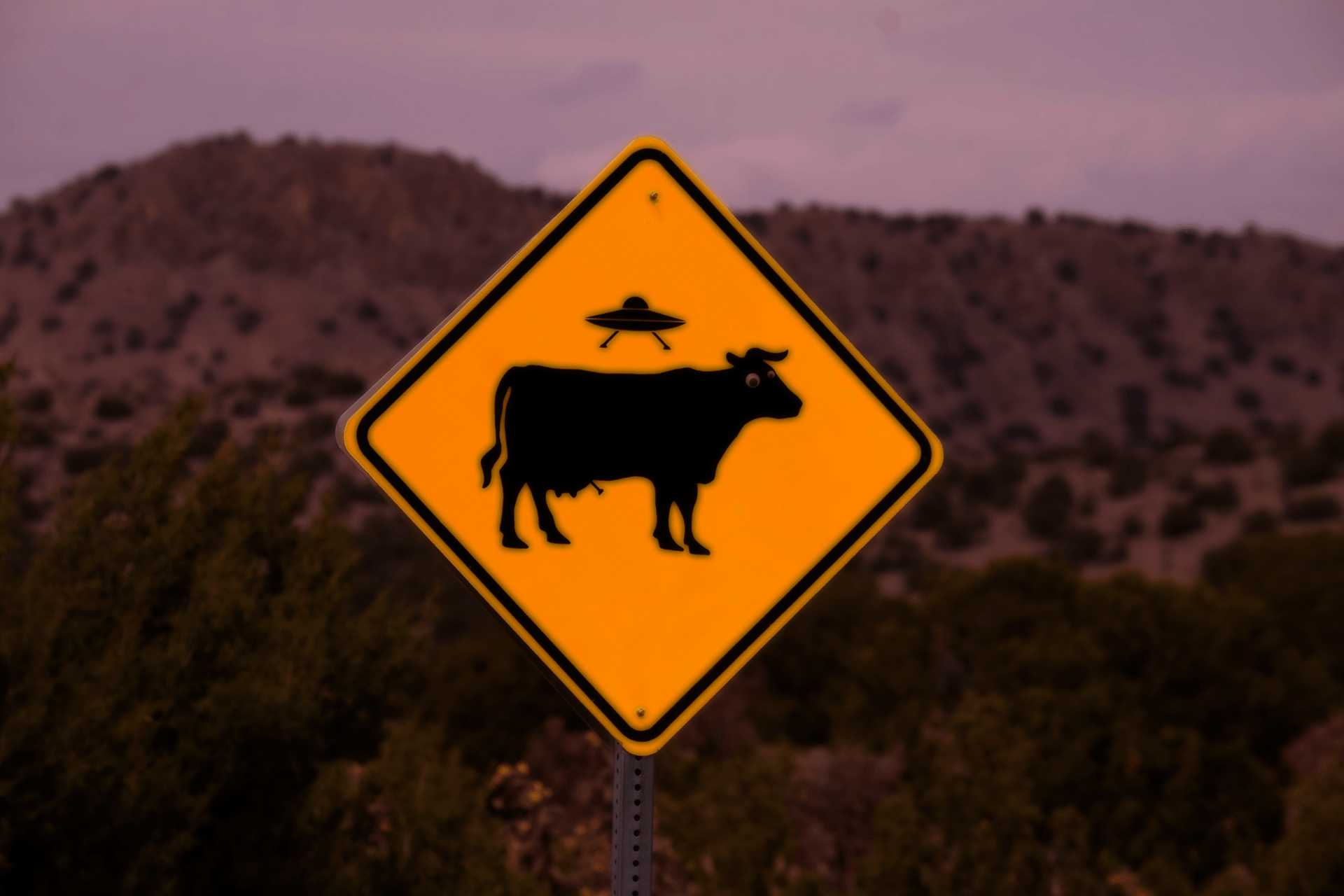Memory Of WWII Still Vivid for Vets
(Part I of the Wake Island Story)
“Considering the power accumulated for the invastion of Wake Island and the meager forces of the defenders, it was one of the most humiliating defeats the Japanese Navy ever suffered.” —Masatake Okumiya, commander, Japanese Imperial Navy
By Steve Pollock
The Duncan (OK) Banner)
Sunday, August 13, 1989
MARLOW — It all came back to them this weekend — the stark terror of facing death while kneeling naked on a sandy beach the stinking hold of the prison ship; the brutality of the Japanese; the obliteration of youthful innocence.
They fought and bled for a two-and-a-half-square-mile horseshoe of an atoll in the mid-Pacific called Wake Island. They were United States Marines and they did their duty.
There were 10 men of that Wake Island garrison at the Marlow home of John Smith this weekend. With Smith, they talked, drank, and smoked their way through the weekend, laughter masking deeper emotions of brotherhood, camaraderie, and painful memories.
In the Smith kitchen, their wives continued the latest of an ongoing series of therapy sessions, attempting to exorcise some of the demons of the last 44 years of their lives with the hometown heroes.
In 1941, with war inevitable, the U.S. government began construction of a series of defensive Pacific Ocean outposts, including Wake, designed to protect against Japanese aggression. They were a little late.
Little Wake Atoll, with some 1,616 Marines and civilians huddled on its three islands, was attacked at noon, Dec. 8, 1941, several hours after Pearl Harbor.
The Marines knew war was possible, but “didn’t think the … guys had the guts to hit us,” one of them said.
Jess Nowlin’s hearing aid battery is getting a little weak as the afternoon wears on, but his memory and sense of humor are still sharp.
He said the Marines were going about their business when they heard the drone of approaching aircraft.
“We thought they were B-17’s out of Pearl coming in to refuel. They weren’t. They broke out of a cloud bank at about 1,800 feet, bomb bay doors open. They tore us up,” Nowlin said.
The Japanese attacked from sea and air, but the Marines held out until Dec. 23; only 400 remained to defend 21 miles of shoreline from 25 warships and a fleet of aircraft. Surrender was inevitable.
Through a haze of cigarette smoke, Robert Mac Brown, a veteran not only of World War II, but of Korea and three tours of duty in Vietnam, remembers the post-surrender scene on the beach.
“We were stripped naked and they hog-tied us with our own telephone wire. A squall came through but lasted only about 10 to 15 minutes. One of my clearest memories of the whole operation is of watching the water run down the bare back of the guy in front of me,” Brown said.
Japanese soldiers lay on the sand in front of the prisoners, swinging machine guns back and forth. The click of rounds being loaded into chambers was ominous. Fingers tightened on triggers.
“There was an argument between the landing force commander and a guy with the fleet. They screamed at each other in Japanese, arguing about whether to kill us or not,” Brown said.
The Marines made their peace and prepared to die.
The argument to make prisoners of the Marines and civilians won the day. The prisoners were allowed to grab what clothing they could to cover themselves.
And then a living hell began which would only be ended by the birth of atomic stars over southern Japan nearly four years later.
Taken off the island on small ships, the prisoners were forced to climb up the side of the Nittamaru, a former cruise ship pitching about on rough seas.
As the men walked back through the ship and down to the hold, the crew beat them with bamboo sticks, in a gauntlet of brutality.
Packed in the stinking hold, several hundred Marines and civilians had only one five-gallon bucket per deck to hold human waste. For the 14 days of the Nittamaru’s passage from Wake to Shanghai, they could barely move.
The cold of Shanghai was felt through their thin tropical khaki. It was January 1942. Robert Brown was to have married his girl on January 12. She married someone else.
“I thought you were dead,” she later told him.
From Shanghai, through Nanking, Peking, Manchuria and Pusan, Korea, the group journeyed in packed cattle cars to their eventual destination, a coal mine on the Japanese island of Hokkaido, where they dug in the shafts alongside third-generation Korean slave labor.
They were slaves themselves until August 1945.
“Thank God for Harry S. Truman and the atomic bomb,” several survivors said, as the others echoed that prayer.
They went home to heroes’ welcomes, but the public “‘never fully appreciated or understood what we did,” Nowlin said.
They’re much older now — in their 60’s and 70’s — and it was a family reunion of sorts; they claim to be closer than brothers. They don’t miss their “get-togethers” for anything in the world; Robert Haidinger traveled from San Diego with a long chest incision after recently undergoing a major operation.
As they gazed through the Oklahoma sunshine, they didn’t see the cow bam beyond the lovegrass rippling in the August breeze; it was a Japanese destroyer was steaming close in to end their lives all over again.
“It was awful, terrible; I wouldn’t have missed it for anything; you couldn’t get me to do it again for a billion dollars,” Nowlin summed it up.
The men: Tony Obre, Fallbrook, Calif; Robert Haidinger, San Diego, Calif.; Robert Murphy, Thermopolis, Wyo.; Dale Milburn, Santa Rosa, Calif.; George McDaniels, Dallas, Texas; Jess Nowlin, Bonham, Texas; Jack Cook, Golden, Colo.; Robert Mac Brown, Phoenix, Ariz.; Jack Williamson, Lawton; Paul Cooper, Marlow, and John Smith, Marlow.
The cost of the defense of Wake Island, from Dec. 8 to 23, 1941: Americans: 46 Marines, 47 civilians, three sailors and 11 airplanes; Japanese: 5,700 men, 11 ships and 29 airplanes.
By Steve Pollock
The Duncan (OK) Banner
Sunday, August 13, 1989
MARLOW — It all came back to them this weekend — fists lashing out during nightmares, the traumatic memories, the attempts to catch up on lost time.
The wives of 10 Wake Island survivors met in Marlow with their husbands this weekend for reasons of their own.
“We go through therapy every time we get together. We help each other with problems,” they said.
The wives: Florence Haidinger, Maxine Murphy, Opal Milburn, Irene McDaniels, Sarah Nowlin, Betty Cook, Millie Brown, Jo Williamson, Juanita Cooper and Marie Smith.
They did their own bit during World War II: The Red Cross, an airplane factory in Detroit, North American Aviation in El Segundo, Calif, Douglas in Los Angeles, the Kress dime store.
They married their men after the long national nightmare was finished, and their lives became entwined by one event: the Japanese attack on Wake Island Dec. 8-23,1941.
Since the first reunion of Wake survivors and their spouses in 1953, these women have been like sisters.
“We love each other, we’re closer than family,” Jo Williamson said.
In Marie Smith’s kitchen, therapy was doled out in a catharsis of talk little different from that of the men gathered on the patio. Talk is said to be good for the soul; these women heal great tears in theirs every time they see each other.
According to the wives, the men came home from the war, married, had children and tried to pick up where they left off.
They wanted to take care of their families and try to catch up. They were robbed of the fun times of their late teens and early 20’s, the women unanimously agree.
“They have also lived every day as if it were their last,” Sarah Nowlin said.
The men needed some help after their harrowing battle and brutal three -and-a-half-year captivity.
According to the women, doctors never realized therapy was in order: “They never got anything.”
One man lashed out with his fists during nightmares; after a few pops, his wife learned to leave the room. Another would slide out of bed and assume a rigid posture on the floor, arms and legs folded. Yet they have all been gentle men.
“I’ve never seen my husband harm or even verbally abuse anyone,” a wife said Reunions such as this help the men and women deal with life as they age. The youths of 16-22 are now grandfathers and grandmothers in their 60’s and 70’s.
Life today is a bit baffling to them.
Extremely proud of their men, the women have no patience with draft dodgers, flag burners, Japanese cars or foreign ownership of America.
They didn’t agree with the Vietnam war policy, but duty to country should have come first, they said.
“I didn’t want my son to go to Vietnam, but I would have been ashamed of him if he hadn’t,” one said.
The issue of flag burning stirs violent protest and emotion in the group: “Made in America”‘ labels are on everything they buy.
And the younger generation does not enjoy the women’s confidence: “I don’t think they could do what we were all called on to do,” they agreed.
And as Marlow afternoon shadows grew longer, the women of Wake continued to cleanse their souls.



